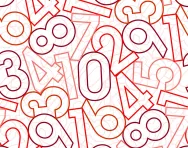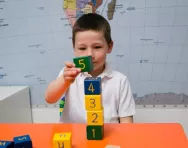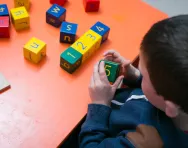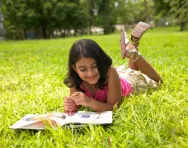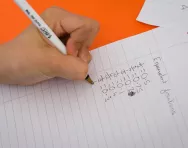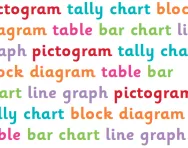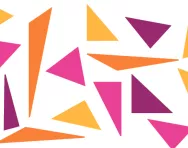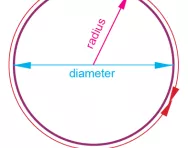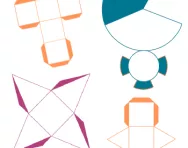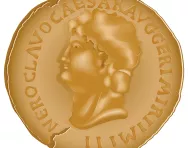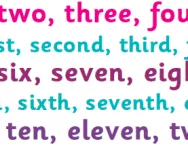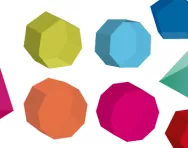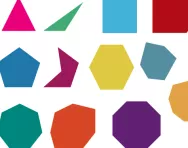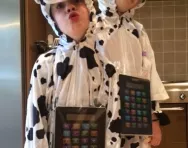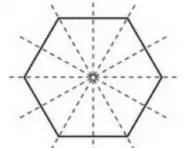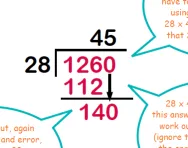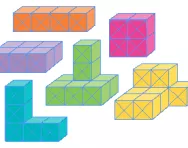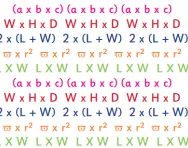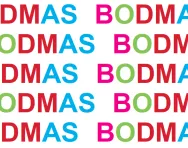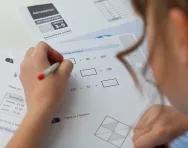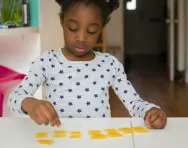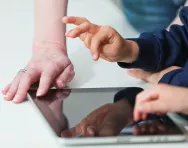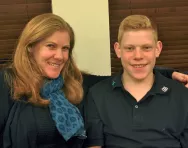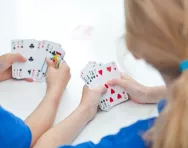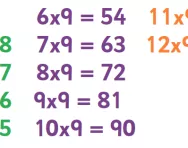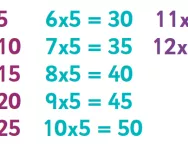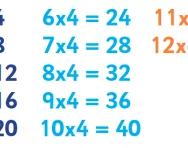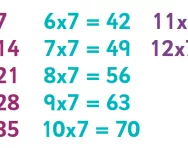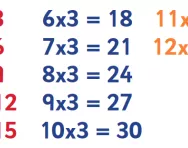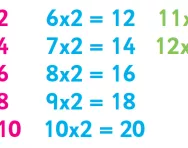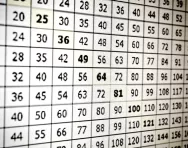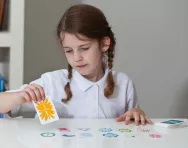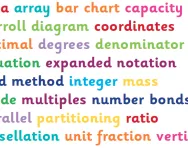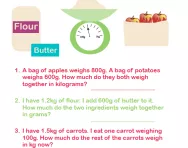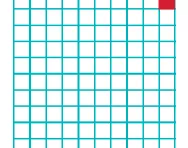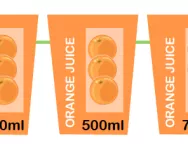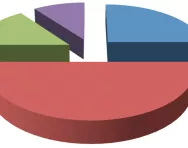Ks2 Maths articles
What is bridging through 10?
You probably "bridge through 10" without even realising it when you're adding up numbers in your head. We explain how this method will be presented to your child in the classroom and how you can help them practise at home.
What is a quadrilateral?
Can you name the 2D shapes we classify as quadrilaterals? Find out how your child will learn about four-sided, 2D shapes in primary school and try some hands-on activities to reinforce their learning at home.
The Year 4 Multiplication Tables Check (MTC) explained
A formal test of multiplication skills takes place in the summer term of Year 4. Our guide for parents explains how the Multiplication Tables Check (MTC) will work in English primary schools.
Hands-on maths: how it could help your child
Counting on fingers is an important maths tool in the early years of primary school, but is it something your child should outgrow? We look at the pros and cons of hands-on maths strategies.
Five fun maths activities to try at home
From board games to baking, we’ve rounded up the best ways to get your child practising their maths skills without even realising.
Best maths story books for children
Introduce ratio, pie charts, probability and even simplifying fractions to children with these brilliant maths story books, picture-book presentations of mathematical concepts that primary-school children will love.
Teachers' tricks for KS2 maths
Is your child struggling with KS2 maths? Help them learn effectively and boost their number confidence in Year 3, 4, 5 and 6 with some useful calculation strategies and tips from primary teacher Phoebe Doyle.
What is data handling?
From pictograms to line graphs, children learn a lot about collecting, organising and presenting data in primary school maths. We explain how data handling is taught in KS1 and KS2 and how you can help your child get to grips with basic statistics at home.
What are equilateral, scalene, isosceles and right-angled triangles?
Children learn to classify triangles as equilateral, isosceles, scalene or right-angled in KS2 geometry. Our guide for parents explains everything you need to know about triangles in primary school, from working out the area to calculating the internal angles.
What are the parts of a circle?
By the end of KS2 children are expected to be able to identify the parts of a circle (circumference, radius and diameter) and begin to use formulae to calculate a circle's perimeter and area. We explain what parents need to know about this aspect of primary-school geometry.
What are nets of shapes?
Can you make a 3D shape from its net? We explain how nets are used in the primary classroom to help children learn more about three-dimensional shapes and their properties in a hands-on, constructive way.
What are Roman numerals?
Children in KS2 are expected to read and write Roman numerals as part of the primary curriculum. We explain how Roman numerals are introduced in the classroom and how you can help your child practise reading Roman numerals at home.
What are cardinal and ordinal numbers?
Reception and KS1 children all learn cardinal and ordinal numbers. We explain how your child will be taught to count and sequence numbers correctly and suggest practical, fun activities you can try at home to support your child's early mathematical learning.
What are prisms and pyramids?
Prisms and pyramids explained for parents, including practical ways children work with 3D shapes in the classroom and learn about their properties.
What is a polygon?
Can you tell your hexagons from your heptagons? Your octagons from your decagons? With the help of educational experts, we explain how polygons are taught in primary school, with examples of regular and irregular versions of each multi-sided shape.
No-sew mathematical costumes for Maths Week
A Maths Week costume?!? Don’t get your numbers in a twist! Non-crafty mum Phoebe Doyle’s on hand with some no-sew, no-stress ideas.
What are line symmetry, reflective symmetry and rotational symmetry?
Understand the forms of symmetry your child will be taught as part of the primary-school curriculum (line symmetry, reflective symmetry and rotational symmetry) and see how the concepts are applied in the KS2 classroom.
What is long division?
Children in Year 5 and Year 6 are encouraged to use the long division method to divide larger numbers. We explain the technique and offer a step-by-step guide to using it, as well as an overview of division teaching and the division methods used in primary school.
What are number facts?
Children are expected to memorise a number of different number facts in primary school, including number bonds to 20 and the multiplication and division facts for the twelve times tables. We explain what number facts your child will be taught when and suggest easy ways to support their learning at home.
What is volume?
Volume and capacity are important concepts in primary maths, and your child will start learning about the amount of 3D space occupied by an object in Key Stage 1. Find out how you can support their learning at home, plus the relevant mathematical formulae, with our parents' guide to volume.
What is a formula?
Formulae help children to work out answers to mathematical problems. We explain which formulae your child will be taught in primary school, including how to calculate perimeter, area and volume, and how you can help your child feel confident using a formula in primary maths.
What is BODMAS?
We explain the concept of BODMAS, used to help Year 6 pupils remember what order mathematical calculations should be completed in, and offer examples of how children will be taught to use this mnemonic in the classroom.
Changes to KS2 SATs in 2025: what parents need to know
If your child is in Y6 in 2025, read on for the most up-to-date SATs information for parents.
10 brilliant primary-school maths aids
Children often learn faster if they are allowed to use practical equipment to support them. Primary teacher Angela Smith explains what maths aids your child might find in the classroom, and how you can also use them at home to help your child practise important numeracy skills with hands-on, practical activities.
Why games-based learning is great for your child
If you despair of the amount of time your child spends attached to their tablet, think again: games and apps are an important part of their learning journey, from pre-school to secondary school, and can help to improve problem-solving skills and communication, as well as boost motivation. Lucy Dimbylow finds out why gaming means learning in the twenty-first century.
"He had problems counting up in twos, fives and even tens"
Lillian Blundell, from Bath, describes her experience of the SEN and school system with her son Robbie, 16, who has dyscalculia, and shares her tips for other parents.
10 ways playing cards helps children with maths
Fancy a quick game of cards? Studies show cognitive benefits to play and card games teach children new strategies for using mathematical information, categorising patterns, sequencing and sorting. Last but not least, this is numeracy practice the whole family will enjoy (though things might get a bit competitive... beware!). Kate Yelland asked maths teachers and experts why sitting down with a pack of cards and a primary-school child is definitely playing your cards right.
Learning the 6, 8 and 9 times table: tips and tricks
Tips and resources to help primary-school children master the 6, 8 and 9 times tables, with advice from experienced educator and teacher John Bald.
Learning the 5, 10, 11 and 12 times table: tips and tricks
Tips and tricks to help you help your child master the "easy" times tables (5, 10, 11 and 12), plus worksheets, games and activities to put the learning into practice.
Learning the 4 times table: tips and tricks
Practising the 4 times table with your child? Try educator John Bald's table-specific tips to help your child master it, then use 4 times table worksheets and games to consolidate the learning.
Learning the 7 times table: tips and tricks
The 7 times table is often the hardest to learn, but don't lose heart – educator John Bald has specific tips and a step-by-step learning plan to help you help your child master it.
Learning the 3 times table: tips and tricks
Once your child is confident with the 2 times table it's time to move on to 3s and 5s. Follow educator John Bald's advice to help you support your child with the 3 times table and find links to 3 times table worksheets and games.
Learning the 2 times table: tips and tricks
The 2 times table is the foundation of all multiplication tables learning. Follow educator John Bald's practical and very specific advice to help you support your child with the 2 times table and find links to worksheets and games to make practice fun.
Times tables: the best ways to learn
Each multiplication table has its own pattern and poses a different challenge to learners. Teacher and educational consultant John Bald offers practical strategies and ideas to help your child learn each times table and boost their confidence with multiplication.
SATs revision: your KS2 SATs maths helper
Some of the maths topics your child needs to know by the time they sit their SATs at the end of KS2 can appear daunting, but we suggest simple and effective ways to practise and revise at home.
Primary numeracy glossary for parents
From area to word problems, TheSchoolRun's primary-school numeracy glossary offers a complete guide to all the maths concepts children are taught in EYFS, KS1 and KS2. Brush up on your own mathematical skills, clear up homework confusion and understand exactly what your child is learning at school by reading our basic definitions (with links to more detailed explanations, teachers' tips and examples).
What is a word problem?
We explain what a word problem is and give examples of the types of word problems your child might be challenged with in each primary-school maths year group, from Year 1 to Year 6.
What is a percentage?
We explain what a percentage is, how children are taught to understand the concept, to find percentages of numbers and to compare fractions of amounts to percentages of amounts.
What is capacity?
We explain what capacity means and how children are taught to understand the concept in KS1 and learn about the relationship between millilitres and litres, and in KS2 use decimal notation to record the capacity of water and convert between units of measurement.
How to draw and interpret pie charts
We explain what a pie chart is, how it is used to help us understand data and how children are taught to interpret pie charts.


